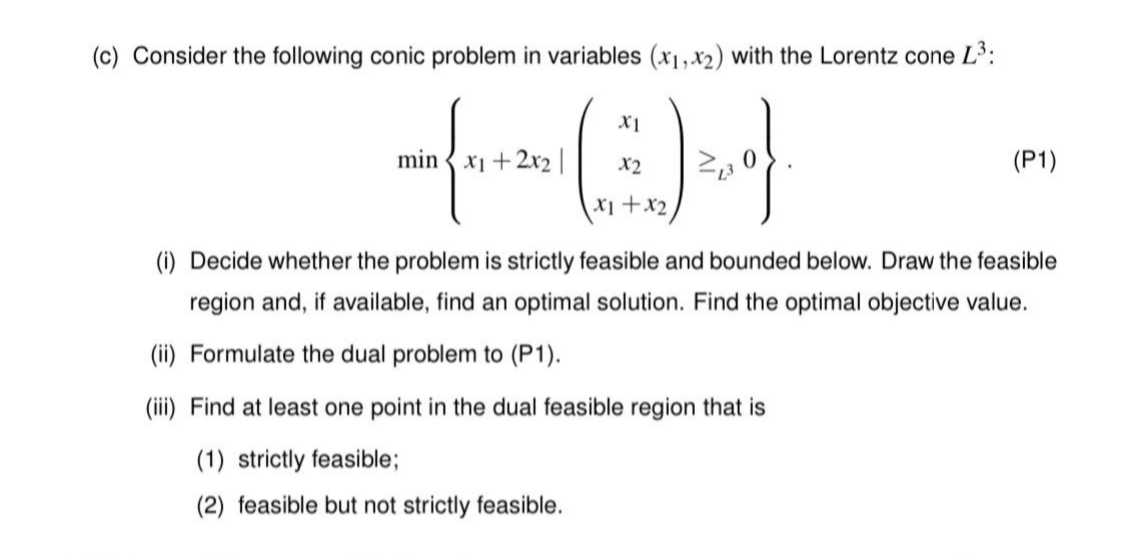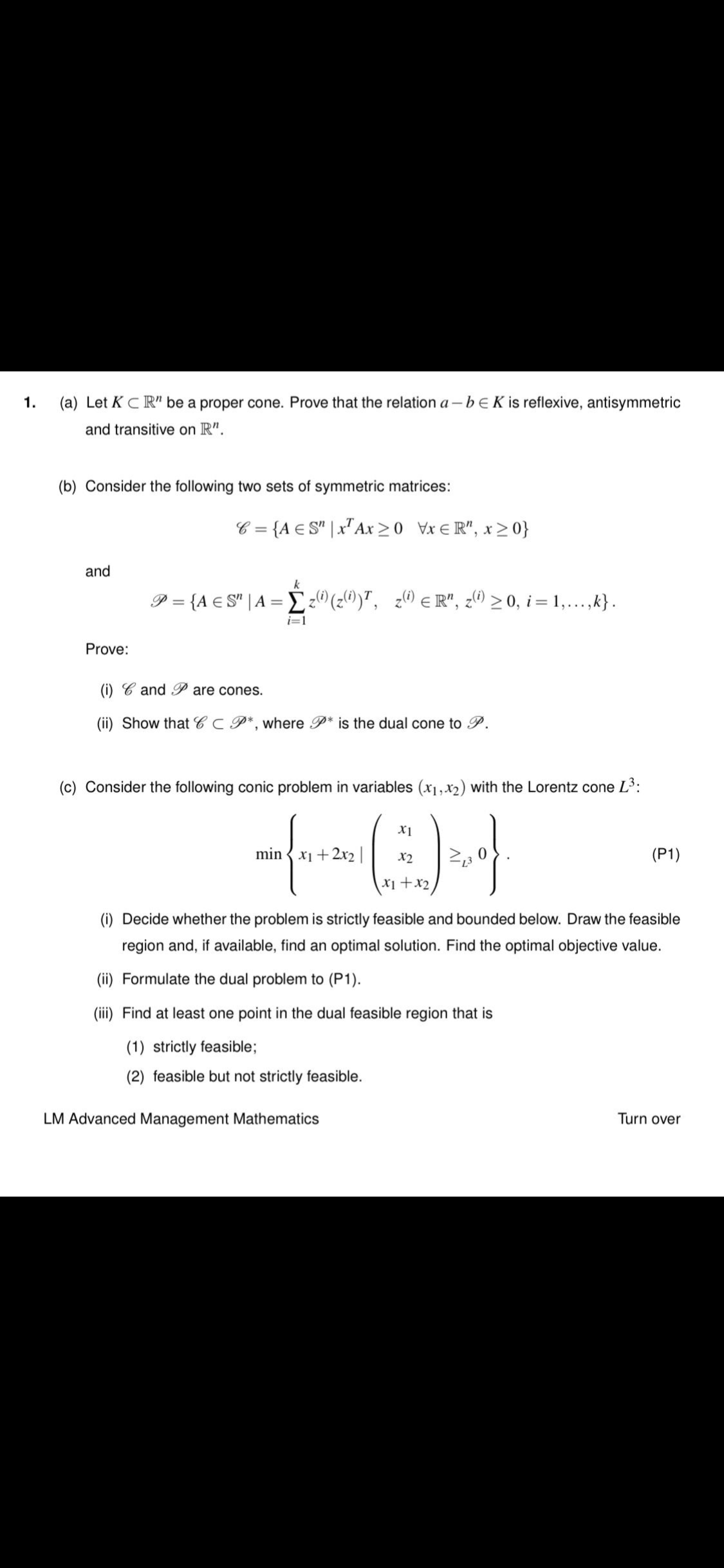(c) Consider the following conic problem in variables (x1,x2) with the Lorentz cone L³: min { x1 +2x2 | X2 (P1) X1 +x2 (i) Decide whether the problem is strictly feasible and bounded below. Draw the feasible region and, if available, find an optimal solution. Find the optimal objective value. (ii) Formulate the dual problem to (P1). (iii) Find at least one point in the dual feasible region that is (1) strictly feasible; (2) feasible but not strictly feasible.
(c) Consider the following conic problem in variables (x1,x2) with the Lorentz cone L³: min { x1 +2x2 | X2 (P1) X1 +x2 (i) Decide whether the problem is strictly feasible and bounded below. Draw the feasible region and, if available, find an optimal solution. Find the optimal objective value. (ii) Formulate the dual problem to (P1). (iii) Find at least one point in the dual feasible region that is (1) strictly feasible; (2) feasible but not strictly feasible.
Algebra for College Students
10th Edition
ISBN:9781285195780
Author:Jerome E. Kaufmann, Karen L. Schwitters
Publisher:Jerome E. Kaufmann, Karen L. Schwitters
Chapter12: Algebra Of Matrices
Section12.CR: Review Problem Set
Problem 35CR: Maximize the function fx,y=7x+5y in the region determined by the constraints of Problem 34.
Related questions
Question
Solve c part optimization problem

Transcribed Image Text:(c) Consider the following conic problem in variables (x1,x2) with the Lorentz cone L3:
X1
min { x1 +2x2 |
X2
(P1)
X1+x2
(i) Decide whether the problem is strictly feasible and bounded below. Draw the feasible
region and, if available, find an optimal solution. Find the optimal objective value.
(ii) Formulate the dual problem to (P1).
(iii) Find at least one point in the dual feasible region that is
(1) strictly feasible;
(2) feasible but not strictly feasible.

Transcribed Image Text:1.
(a) Let K CR" be a proper cone. Prove that the relation a - bEK is reflexive, antisymmetric
and transitive on R".
(b) Consider the following two sets of symmetric matrices:
C = {A € S" | x"Ax > 0 Vx €R", x> 0}
%3D
and
k
P = {A € S" | A = £ ®(z®)", z® eR", ¿0 > 0, i = 1,..,k} .
%3D
i=1
Prove:
(i) C and P are cones.
(ii) Show that C C P*, where P* is the dual cone to P.
(c) Consider the following conic problem in variables (x1,x2) with the Lorentz cone L3:
X1
min { x1 +2x2 |
X2
(P1)
x1+x2
(i) Decide whether the problem is strictly feasible and bounded below. Draw the feasible
region and, if available, find an optimal solution. Find the optimal objective value.
(ii) Formulate the dual problem to (P1).
(iii) Find at least one point in the dual feasible region that is
(1) strictly feasible;
(2) feasible but not strictly feasible.
LM Advanced Management Mathematics
Turn over
Expert Solution
This question has been solved!
Explore an expertly crafted, step-by-step solution for a thorough understanding of key concepts.
Step by step
Solved in 4 steps with 2 images

Knowledge Booster
Learn more about
Need a deep-dive on the concept behind this application? Look no further. Learn more about this topic, advanced-math and related others by exploring similar questions and additional content below.Recommended textbooks for you

Algebra for College Students
Algebra
ISBN:
9781285195780
Author:
Jerome E. Kaufmann, Karen L. Schwitters
Publisher:
Cengage Learning

Algebra for College Students
Algebra
ISBN:
9781285195780
Author:
Jerome E. Kaufmann, Karen L. Schwitters
Publisher:
Cengage Learning